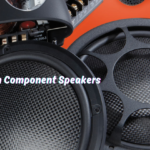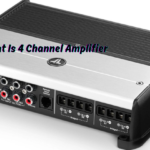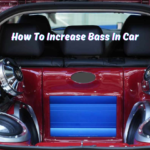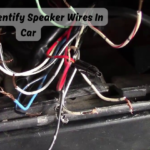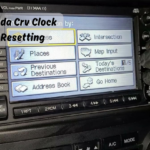Car amplifiers are essential for the best sound quality in a car audio system. They provide power to your speakers and help produce higher volume levels without distortion. However, just installing an amplifier is not enough; it needs to be tuned properly for optimal performance. Tuning your car amp for mids and highs is crucial as these frequencies carry most of the music’s melody and vocals.
In this guide, we will walk you through the process of tuning your car amp for mids and highs. We will cover everything from understanding the frequency spectrum to using an equalizer and crossover to achieve the best sound quality in your car audio system.
Understanding the Frequency Spectrum
The frequency spectrum is a range of frequencies that human ears can hear, typically measured in Hertz (Hz). The lower frequencies, ranging from 20 Hz to around 250 Hz, are considered the bass or low-end frequencies. The midrange frequencies range from around 250 Hz to 4 kHz and are responsible for most of the instruments’ melodies and vocals. The high frequencies, from 4 kHz to around 20 kHz, add clarity and detail to the sound.
To tune your car amp for mids and highs, you need to understand how each frequency range affects the overall sound quality. This will help you make precise adjustments during the tuning process.
Aalso, keep in mind that different types of music have different frequency emphasis, so it’s essential to tune your car amp accordingly. For example, bass-heavy music genres like hip hop and EDM will require more emphasis on the low-end frequencies, while classical or acoustic music will need a more balanced approach.
Benefits of Tuning Your Car Amp for Mids and Highs
Properly tuning your car amp for mids and highs can significantly improve the overall sound quality in your car audio system. It allows you to adjust the levels of each frequency range to achieve a balanced and well-defined sound. This not only enhances the listening experience but also reduces strain on your speakers, preventing damage from distorted or overpowering frequencies.
Tuning your car amp for mids and highs also helps eliminate any potential frequency clashes, where certain frequencies may cancel each other out, resulting in a muddy or unclear sound. It allows you to bring out the best in each frequency range and create a harmonious blend of all the elements in the music.
Also, by tuning your car amp for mids and highs, you can ensure that the sound quality remains consistent at different volume levels. This means you can enjoy your music without worrying about it sounding too bass-heavy or tinny as you adjust the volume.
How To Tune A Car Amp For Mids And Highs
Now that you have a basic understanding of the frequency spectrum let’s dive into the steps to tune your car amp for mids and highs.
Set Your Crossover Frequencies:
The crossover frequency is the point where the amp starts to reduce power to specific frequencies. It’s crucial to set your crossover frequencies correctly to avoid distortion and ensure a smooth transition between frequencies.
To tune for mids and highs, you should start by setting the low-pass filter (LPF) at around 250 Hz and the high-pass filter (HPF) at around 4 kHz. This will allow the midrange frequencies to pass through and be amplified while filtering out any low or high-end frequencies that may cause distortion. Adjust these frequencies based on your music preference and the capabilities of your car audio system.
Adjust Your Equalizer:
The equalizer is used to adjust the levels of specific frequency ranges to achieve a balanced and natural sound. For mids and highs, you will primarily be focusing on the midrange and treble bands.
Start by setting your equalizer to “flat,” meaning all frequencies are at the same level, then play some music and adjust each band accordingly. You can also use a reference track that you’re familiar with to make more precise adjustments. Don’t be afraid to experiment with different settings until you find the perfect balance for your ears.
Test and Make Fine-Tuning Adjustments:
After setting your crossover frequencies and equalizer, it’s time to test your car audio system. Play a variety of music genres and pay attention to how each frequency range sounds. If some frequencies seem too overpowering or lacking, make small adjustments to your crossover and equalizer settings until you achieve a balanced sound.
It’s also crucial to test your system at different volume levels to ensure it sounds good at both high and low volumes. Sometimes, what may sound good at high volumes can be too harsh or distorted at lower levels.
Use a Spectrum Analyzer:
A spectrum analyzer is a helpful tool that displays the audio frequency levels in real-time. You can use it to see how your car amp is amplifying different frequencies and make adjustments accordingly. Some head units or equalizers may have built-in spectrum analyzers, but you can also download apps on your smartphone for this purpose.
Also, consider using an RTA (real-time analyzer) microphone to measure the frequency response inside your car and make more precise adjustments.
Consider Room Acoustics:
One often overlooked factor when tuning a car amp is the impact of room acoustics. The interior of your car can significantly affect how sound travels and is perceived. Factors like materials used, shape and size of the car, and placement of speakers can all impact sound quality.
To optimize your car audio system’s sound, consider investing in acoustic treatments like sound deadening materials or speaker baffles to reduce vibrations and improve clarity. You can also experiment with different speaker placements for optimal sound distribution.
Experiment and Trust Your Ears:
Lastly, it’s essential to remember that tuning a car amp for mids and highs is not an exact science. Every car audio system is different, so you may need to experiment with settings to find your ideal sound. And most importantly, trust your ears – if it sounds good to you, then it’s the right setting.
Don’t be afraid to make changes and fine-tune your settings until you achieve the perfect sound for your car audio system. Remember, it’s all about finding the right balance between mids and highs to achieve a clear and natural sound.
Seek Professional Help if Needed:
If you’re not confident in tuning your car amp yourself, don’t hesitate to seek professional help. A car audio specialist can help you optimize your system and make precise adjustments for the best sound quality. They may also have access to specialized equipment like an RTA or tools to fine-tune your amp’s frequencies.
Just be sure to communicate your music preferences and desired sound outcome so that the professional can tune your car amp accordingly. With their expertise, you can achieve the perfect sound for your car audio system.
Trouble Shooting Tips:
- If your mids and highs sound too harsh or distorted, try lowering the crossover frequency for the high-pass filter.
- If your low-end frequencies sound weak, increase the crossover frequency for the low-pass filter.
- Consider upgrading your car audio system components if you’re not satisfied with the sound quality even after tuning.
- Always check for any loose connections or damaged wires, as they can affect sound quality.
- Experiment with different equalizer and crossover settings until you find the perfect sound for your ears.
- Consider investing in acoustic treatments to improve room acoustics and overall sound quality.
- Seek professional help if you’re unsure about tuning your car amp yourself.
Tips for Optimal Sound Quality:
- Use high-quality audio files or streaming services to ensure the best possible sound source for your car amp.
- Regularly clean and maintain your car audio system, including speakers and amplifier, to avoid any potential issues that may affect sound quality.
- Invest in high-quality components like speakers and amplifiers for optimal sound reproduction.
- Consider upgrading your car’s electrical system, such as adding a secondary battery or upgrading to a high-output alternator, if you have a powerful amp that requires more power.
- Avoid cranking up the volume too high for extended periods as it can cause distortion and potentially damage your audio components.
- Remember to adjust your settings for different music genres and songs as each may require different tuning.
- Trust your ears and make changes as needed to achieve the perfect sound for you. By following these tips, you can tune your car amp for mids and highs like a pro and enjoy a high-quality audio experience every time you hit the road.
FAQs
Does tuning a car amp for mids and highs require any technical knowledge?
While some technical knowledge can be helpful, it’s not necessary. With patience and experimentation, anyone can tune their car amp for mids and highs.
Can I use different crossovers and equalizer settings for different music genres?
Yes, it’s recommended to adjust your settings for each music genre to achieve the best sound for each.
How often should I tune my car amp?
It’s a good idea to regularly check and adjust your settings, especially if you notice any changes in sound quality or add new components to your system. However, there is no set timeline as it can vary depending on individual preferences and usage. Ultimately, trust your ears and make changes as needed for the best sound.
Conclusion:
Tuning your car amp for mids and highs is a crucial step in achieving high-quality sound in your car audio system. By following these tips and utilizing helpful tools like spectrum analyzers, you can optimize your amp’s settings for the perfect balance between mids and highs.
Remember to consider room acoustics, trust your ears, experiment, and seek professional help if needed. With the right approach, you can achieve a clear and natural sound that will enhance your driving experience. Happy tuning! So, get ready to hit the road with your perfectly tuned car audio system and enjoy crystal-clear mids and highs every time you turn on the music.



